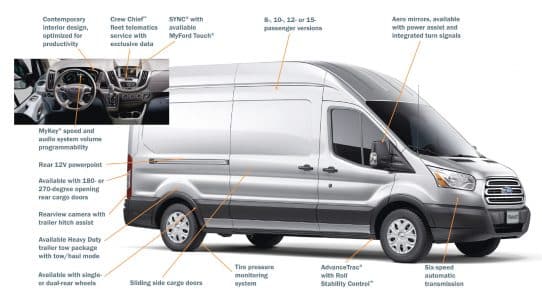Despite the rarity of seeing one parked in a dealership’s showroom, the sale of commercial vans is currently the fastest-growing, most lucrative vehicle segment. For the first time this year, the combination of full size and compact commercial vans is poised to reach half a million sales, and sales of full size vans alone are increasing eight times faster than the industry average so far in 2016. An improving economy, plus innovations in technology, has made commercial vans one of the hottest item on the market.

Vans Wilder
Over the last few years, sales of commercial vans have skyrocketed, with sales in the US leaping 23% in December 2015, and ending 2015 19% up on the previous year. The overall category grew far faster than the overall new vehicle industry, which grew less than 6% in the same time period. Full size vans, led by Ford’s Transit, posted a 14% year-on-year improvement in 2015, while the smaller Ford Transit Connect produced a 21% year-on-year increase in 2015, its sixth consecutive year of growth. Ford Transit Connects made up 55% of the small commercial vans sold in the US in 2015.
Who buys these vans? Plumbers, electricians, caterers, florists – anyone who needs a relatively inexpensive way of transporting goods or specialized equipment for their business – make up a portion of sales, with tens of thousands of vans being sold to small businesses every year. Vans are also sold in bulk to larger companies, such as utilities, cable providers and other big businesses. Commercial vans are extremely popular with automakers and dealers because people tend to buy the same brand over and over again.
Why Now?
There are several reasons why commercial van sales have grown so much recently. One, as alluded to previously, is the improving US economy – higher demand for services has seen an increase in the need for vans to deal with all the new work. Fuel economy is also a significant factor; customers might spend more upfront on a Transit but pay less per mile on their old Econoline. And if you have a fleet of 50 vans and reduce fuel usage by 20%, that translates into huge savings on gas. The business case is undeniable, and it only improves with scale.
Another reason is the variety of configurations now offered on commercial vans. Whereas the industry was previously used to a one-size-fits-all model, the recent additions of the Transit, ProMaster and Nissan NV have revolutionized the market since the last time many small businesses bought one. The old options were rather archaic and obsolete, but now buyers have many options to choose from. For example, Ford offers the Transit in 64 configurations, with different lengths, heights and capacities, and the possibility of including features like LED lighting for the cargo area, rain-sensing wipers, and premium audio systems. This has generally pushed up the price, but with the greater fuel economy available in the current models, buying a new van is definitely worth the investment.
Leading the Way
The market for vans is very competitive, and several contenders are battling it out for dominance. The Mercedes-Benz Sprinter 4Matic had strong sales in 2014, a trend likely to continue with the release of their all-wheel-drive variant, which increases traction, stability and handling. It’s also very efficient, with a four-cylinder diesel engine that pumps out plenty of power. Conversely, the Nissan NV takes a different tack: it drives like a big, tough SUV with 12 flexible seats and 324 possible configurations. The front passenger seat also folds down into a tray-like work table for the driver. Then there’s the Ram Promaster, which comes in three lengths, two roof heights and two engine choices (gas or diesel). It has a very low floor, which provides easier access for people and cargo, and a simple, one-piece front fascia, making repairs less expensive.
But the market leader is still the Ford Transit, which is not only available in three different lengths but with three different roof heights. The Transit comes with Ford’s gasoline V-6 or five-cylinder diesel motor, and the EcoBoost twin-turbo V-6 engine, providing the power of a V-8 and the fuel economy of a V-6. It can be fitted up to run on CNG or LPG, making it easily the most configurable choice where engine is concerned – and this is definitely reflected in its popularity!
